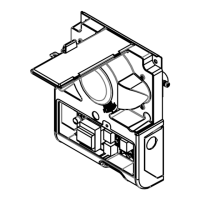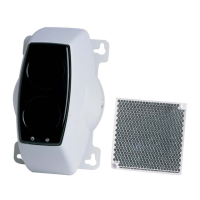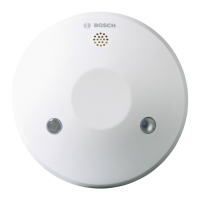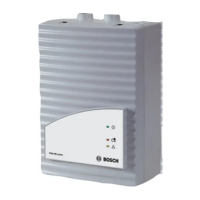6 en | System Overview Conventional Automatic Detectors
F.01U.002.707 | 8.0 | 2011.10 Operation Guide Bosch Sicherheitssysteme GmbH
2 System Overview
2.1 Configuration of the Detector
2.2 Functional Description of Sensor Technology
2.2.1 Optical Sensor (Smoke Detector)
The optical sensor uses the scattered-light method.
An LED sends light into the measuring chamber (refer to Figure 2.1, item 1); this light is
absorbed by the labyrinth structure. In the event of a fire, smoke enters the measuring
chamber. The light is scattered by the smoke particles and hits the photo diodes, which
transform the quantity of light into a proportional electrical signal.
2.2.2 Thermal Sensor (Heat Detector)
A thermistor (refer to Figure 2.1, item 2) in a resistance network is used as a thermal sensor;
an analog-digital converter measures the temperature-dependent voltage at regular intervals.
Depending on the detector class set, the temperature sensor switches to an alarm state if the
maximum temperature exceeds 54 °C (thermal maximum) or a defined temperature increase
within a particular timeframe (thermal differential).
2.2.3 Chemical Sensor (Gas Sensor)
2.3 System Description
Up to two detection principles are integrated into the FCP-320/FCH-320 Series Fire
Detectors:
– Optical (for smoke): O
– Thermal (for heat): T
– Chemical (for gas): C
1 Smoke measurement chamber with
optical sensor
Figure 2.1 Configuration of the Detector
2 Thermal sensor
3 Chemical sensor (covered on the cross-
section)
4 Individual display
5 PC board with evaluation electronics
6 MS 400 / MS 400 B Base
6
4
5
2
1
3
The gas sensor (refer to Figure 2.1 and Figure 2.2, item 3)
detects mainly the carbon monoxide (CO) that is produced
by a fire, but it also detects hydrogen (H) and nitrogen
monoxide (NO).
The underlying measurement principle is CO oxidation and
the measurable current that it creates. The sensor signal
value is proportional to the concentration of gas.
The gas sensor supplies additional information in order to
reliably suppress deception variables.
Figure 2.2 Chemical Sensor
3
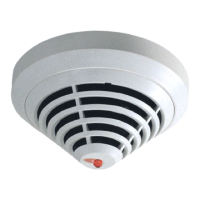
